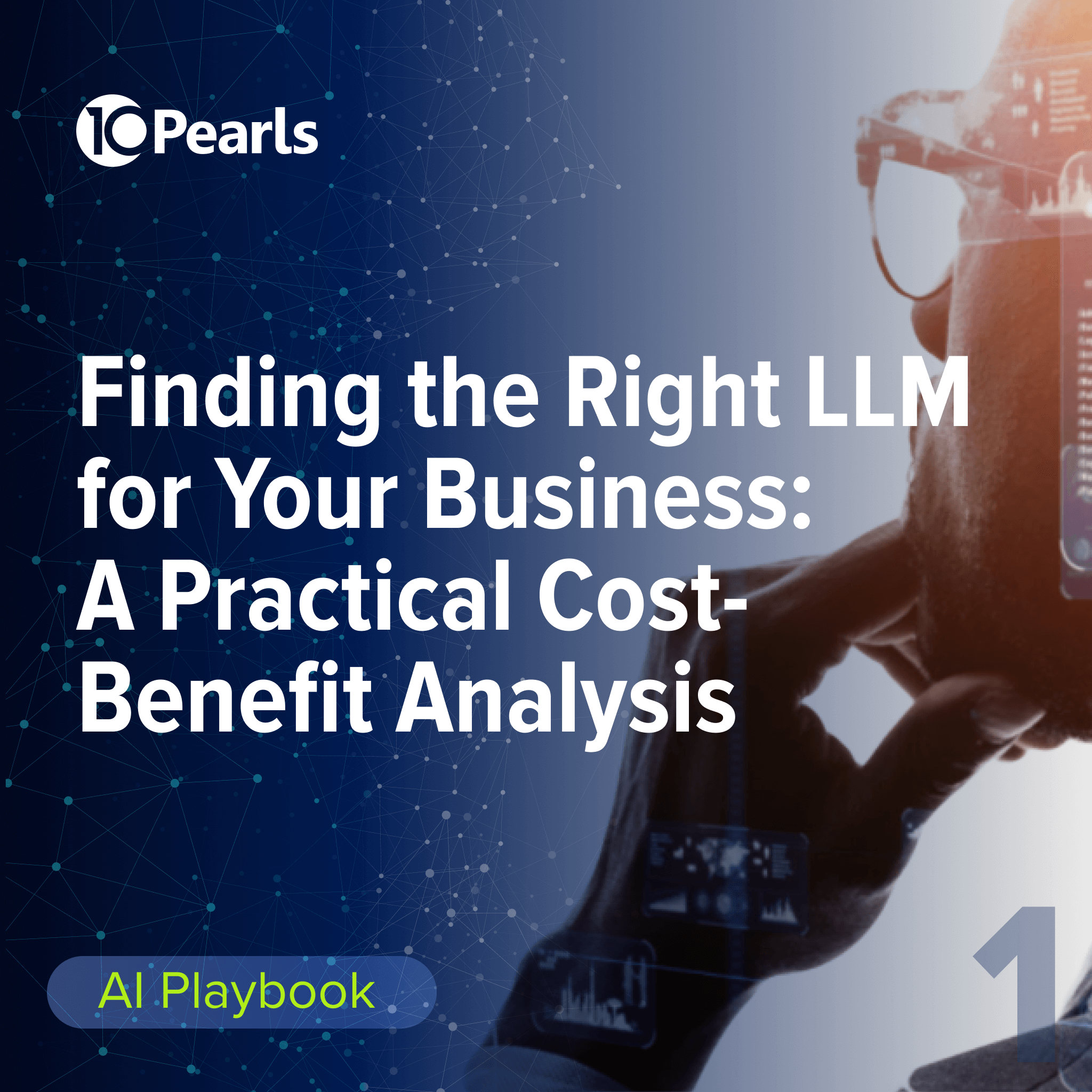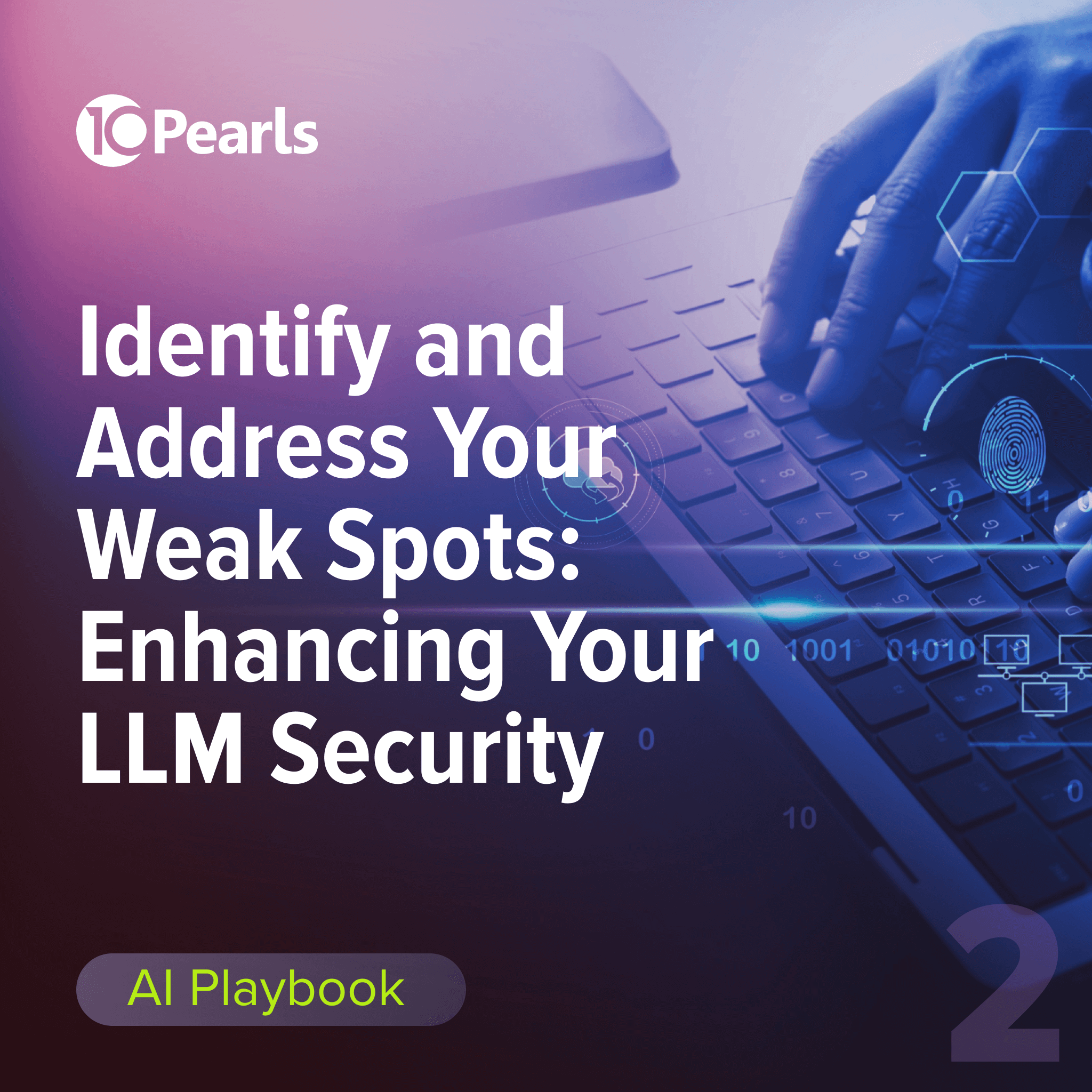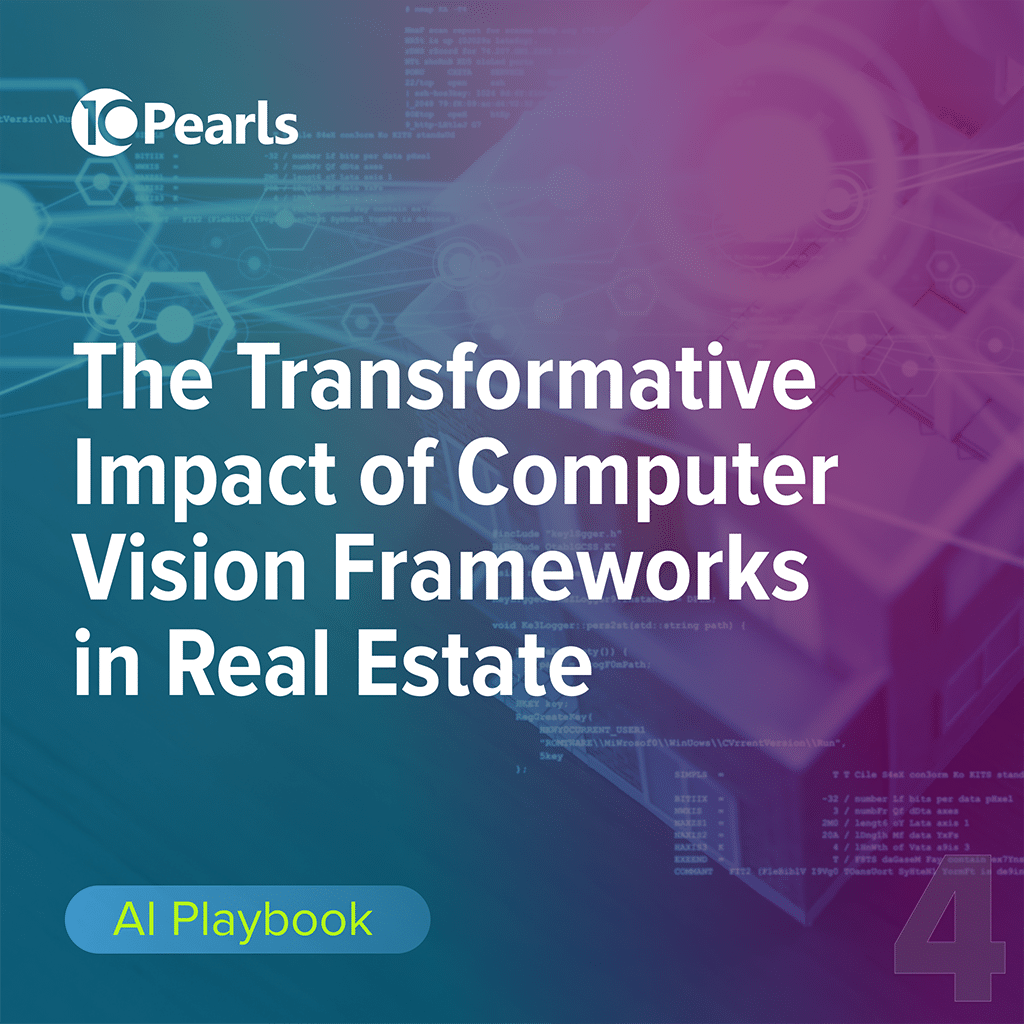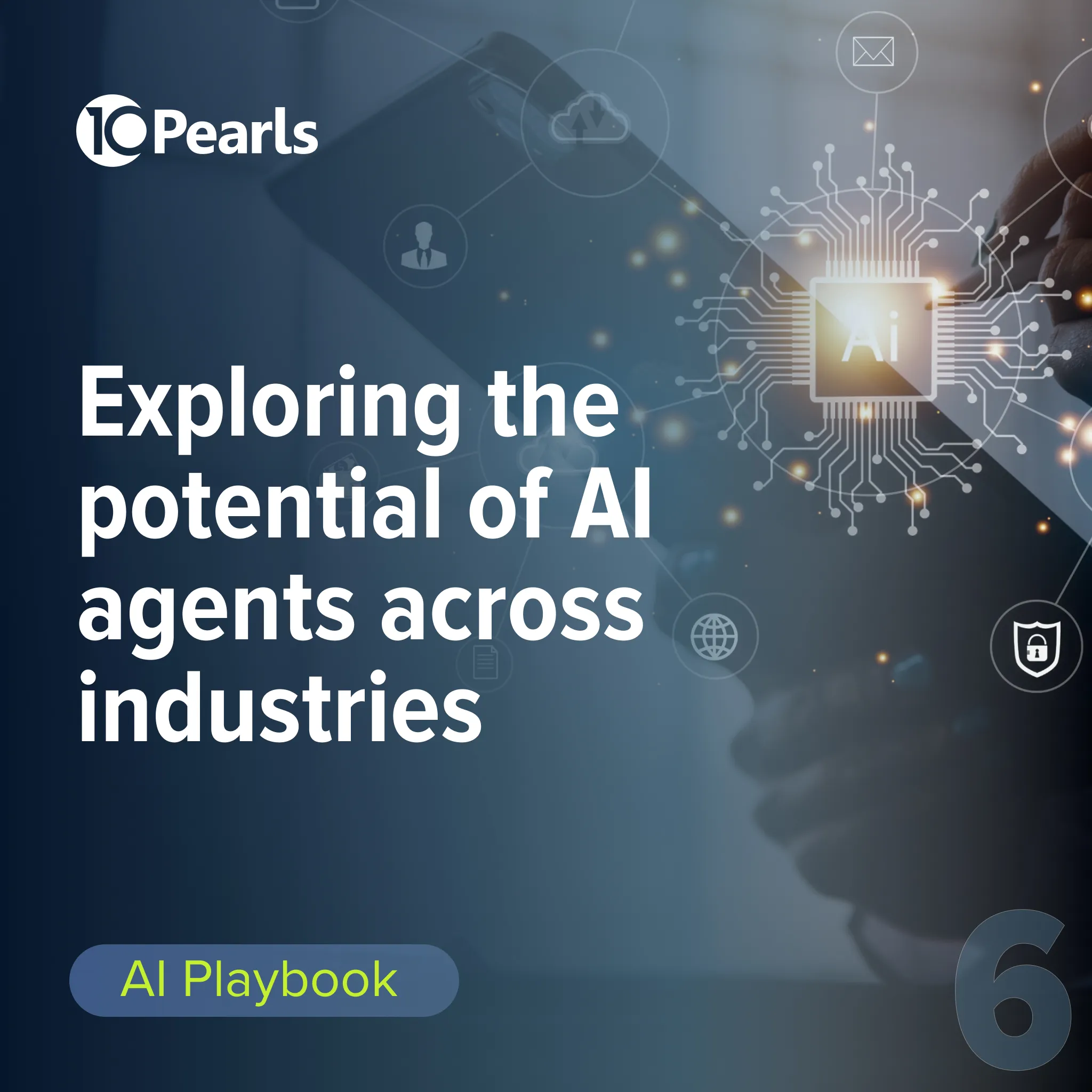Enterprise AI Implementation – From Pilot to Production Success
By 10Pearls editorial team
A global team of technologists, strategists, and creatives dedicated to delivering the forefront of innovation. Stay informed with our latest updates and trends in artificial intelligence, advanced technology, healthcare, fintech, and beyond. Discover insightful perspectives that shape the future of industries worldwide.
The journey from AI pilot to production deployment is a critical and challenging phase in enterprise AI adoption. Recent research reveals that 88% of AI proof-of-concepts never even reach wide-scale deployment.
This pitfall between pilot success and enterprise implementation has created what industry leaders call “pilot purgatory”, a stage in product development where AI applications become derailed and fail to reach production.

Blog contents
- Why enterprise AI projects fail
- Strategic misalignment
- Weak data readiness
- Infrastructure deficits
- Integration challenges
- Our guide to enterprise AI success
- Business-first strategy
- Data governance
- Enterprise data architecture
- How enterprises can scale AI beyond pilots
- Why 10Pearls is a trusted partner for enterprise AI
Success in enterprise AI implementation requires investment in laying the right foundation to build upon. This blog will explore why so many enterprise AI projects fail, provide a proven outline for building that strong foundation that many businesses overlook, and close with key insights for long-term success.
Why enterprise AI projects fail
Our experience helping enterprises successfully navigate and implement AI solutions has revealed key insights into why AI projects struggle to reach production and deliver value. We have identified four critical pitfalls in the journey from pilot to production.
Strategic misalignment
Failure often occurs when companies approach AI implementation as a technology deployment rather than a strategic business transformation solution. Without clear connections to business objectives or operational efficiency gains, projects often fail to deliver any meaningful value. Effective enterprise AI strategies must start with targeted business problems, user needs, and measurable KPIs.
Weak data readiness
Poor data quality is another major factor in enterprise AI model integration failures. Pilot projects typically rely on specific, curated datasets that do not reflect operational reality. Real-world data is messy, unstructured, unorganized, and scattered across hundreds of systems. Without comprehensive data governance addressing quality, accessibility, and standardization before scaling, even technically sound AI solutions can collapse under the weight of data variability.
Infrastructure deficits
Many organizations launch AI pilots with dependence on legacy systems that are sometimes not designed for AI-scale deployment. The lack of scalable infrastructure creates costly rework when moving to production. Cloud-native platforms and dynamic architectures must be established from day one to support future expansion without operational disruption. Organizations that treat infrastructure as an afterthought find their pilots permanently trapped in development environments, unable to handle real-world performance demands or integration requirements.
Integration challenges
Integrating AI models into existing enterprise systems can present significant technical hurdles. Production environments demand seamless integration with legacy systems and platforms, financial databases, and operational tools. Models must deliver quick responses, process continuous data streams, and maintain reliability across complex IT ecosystems. Integration complexity, combined with security requirements and compliance standards, often proves insurmountable for projects built in isolation.
Our guide to enterprise AI success
When it comes to successfully deploying enterprise AI solutions, there are three key pillars to keep in mind: strategic business alignment, strong data governance, and scalable enterprise AI architecture.
Organizations that master these pillars will be well on their way to realizing meaningful, sustained growth and innovation along their enterprise AI journey.
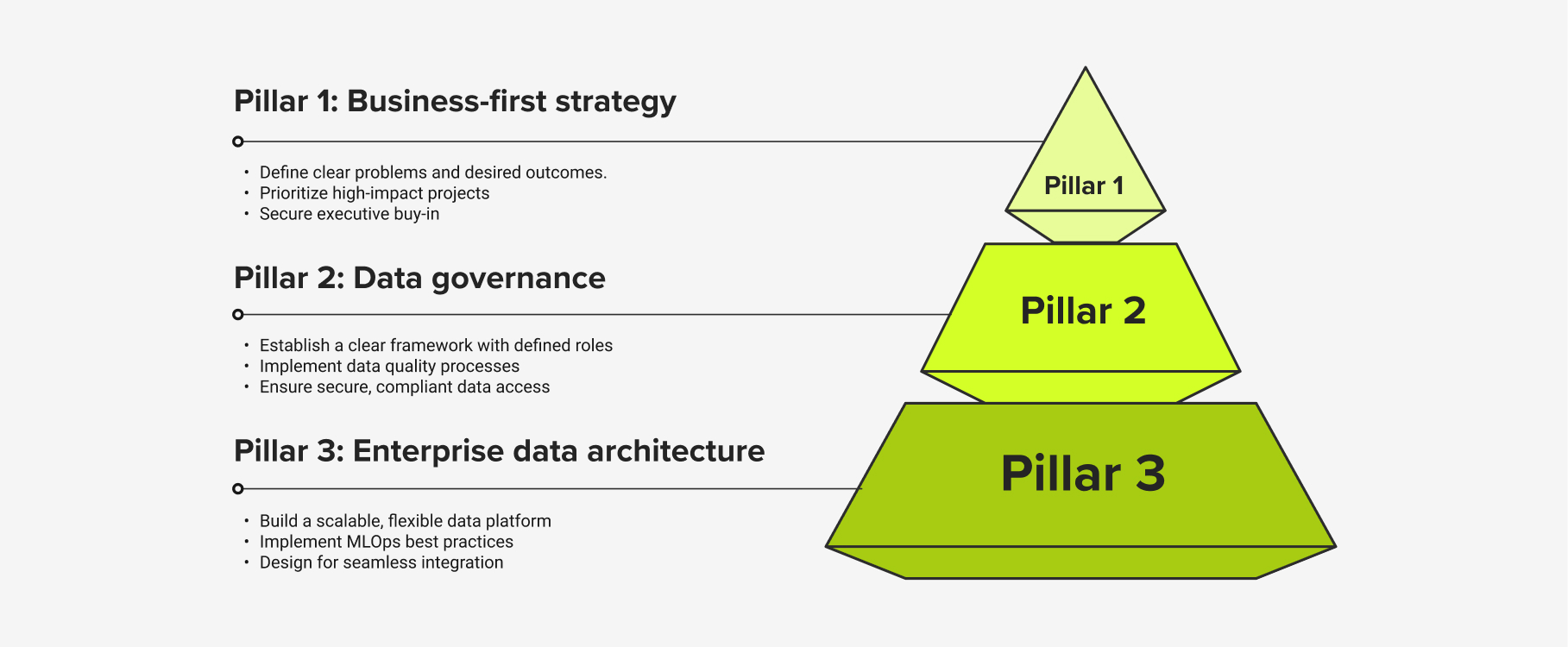
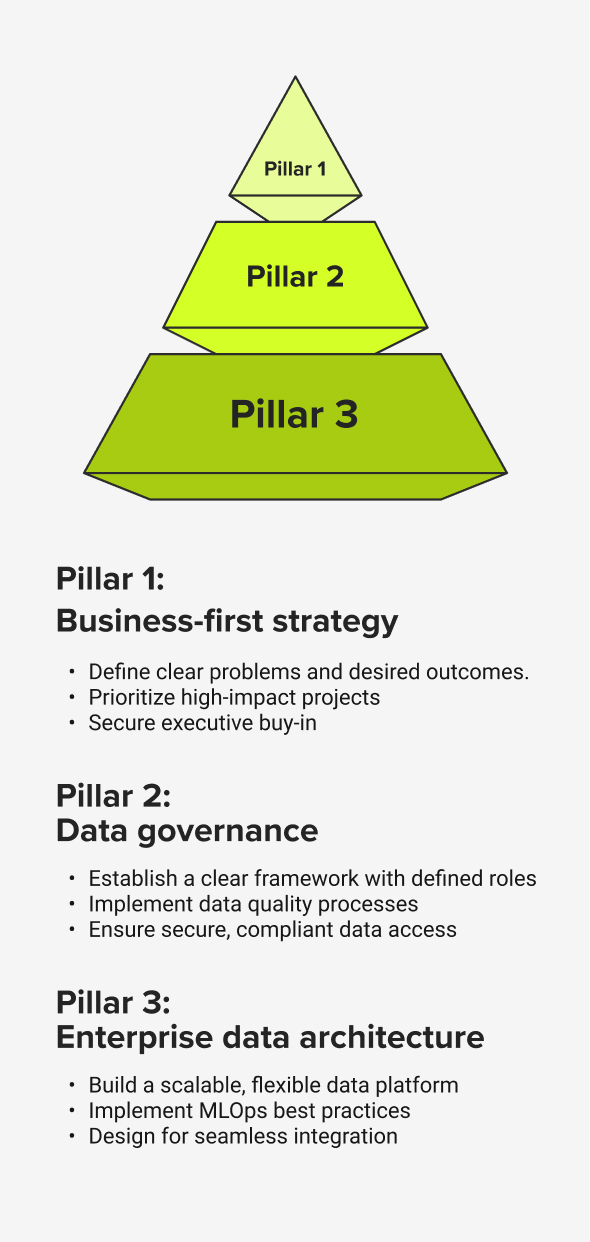
Pillar 1: Business-first strategy
The foundation of any enterprise AI strategy is clarity on business value.
Define clear business problems and outcomes.
Start by identifying the precise challenges and pain points AI should solve, as well as how you will measure and assess whether or not the solution is addressing those challenges.
Insight:
The business objectives should be very similar to ones you already have. AI is just a tool you can now apply to these objectives.
Prioritize high-impact projects
Not every AI use case delivers equal value. Focus first on projects with measurable ROI and broad organizational relevance, rather than chasing niche or experimental ideas.
Secure executive buy-in
Sustained executive support ensures the appropriate and necessary resources, governance, and change management are put in place for your initiative. A fully prepared enterprise aligns strategy and leadership before scaling AI.
Pillar 2: Data governance
Without robust AI governance, even the most advanced models will fail in production.
Establish a clear framework with defined roles
Assign ownership of data stewardship, governance, and compliance to accountable leaders across business and technology.
Implement data quality processes
AI is only as strong as the data behind it. Standardize processes for collecting, using, and maintaining data quality to ensure consistent performance.
Ensure secure, compliant data access
Protect sensitive information while enabling trusted data sharing. Scalable governance frameworks and compliance practices are critical for successful enterprise AI implementation.
Pillar 3: Enterprise data architecture
Lastly, enterprises must build architectures designed for scale, adaptability, and resilience.
Build a scalable, flexible data platform
Invest in cloud-native, modular architectures that can grow with business needs and support diverse enterprise AI applications.
Implement MLOps best practices
Continuous integration, deployment, and monitoring of AI models ensures performance in production. MLOps is the operational backbone that bridges the gap from pilot to production.
Design for seamless integration
AI models must connect with core enterprise systems. Building for interoperability and integration avoids the pitfalls of siloed pilots and accelerates enterprise-wide adoption.
Together, these three pillars form a repeatable playbook for moving beyond experiments and scaling enterprise AI architecture that delivers lasting business impact.
How enterprises can scale AI beyond pilots
Success in escaping “pilot purgatory” comes down to establishing a business-first enterprise AI strategy that prioritizes clear goals and measurable outcomes. By defining connections between AI capabilities and business objectives, implementing comprehensive data governance for AI and designing enterprise-grade architectures that support scale, organizations transform AI from an experimental technology to a competitive advantage.
The investment required to build a production-ready foundation may seem complicated compared to pilot project costs. However, not establishing this foundation will virtually guarantee missed opportunities, resource allocation inefficiencies, and competitive disadvantage in increasingly AI-focused markets.
The path forward is clear. Enterprises must:
- Build strategies tied to measurable business outcomes.
- Invest in data governance for AI that ensures quality, security, and trust.
- Design flexible, future-proof enterprise AI architectures that support integration, scalability, and user adoption.
Why 10Pearls
is a trusted partner for enterprise AI
As an end-to-end AI implementation partner, we
guide you through this process with our AI readiness assessment, strategy and discovery workshops, and industry-leading enterprise AI development. Our experience working with enterprises across various industries, including healthcare, finance,
telecom, and industrials, has given us the flexibility to work with diverse companies and tackle industry-specific challenges.
By evaluating your current AI maturity level and adopting a value-driven approach to designing innovative solutions, we help you navigate the development of AI solutions and achieve measurable business impact.
Related articles
